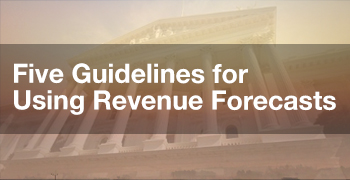
- All Articles Incomes
IRS Data Show Pandemic Uptick in Outmigration Continues July 31, 2024
Recently released figures from the Internal Revenue Service (IRS) show that California continues to lose taxpayers to other states. The state has long had annual net outmigration (more people moving out of California to other states than moving in) but the trend has increased since 2020. Looking ahead, should the heightened trend of net outmigration continue, it could drag down annual income tax revenue growth below its long-term average.
Industry Wage Growth in California November 8, 2017
In this post, we describe trends in industry wages in California between 1990 and 2016.
Census Bureau Poverty Statistics Published September 12, 2017
According to the Supplemental Poverty Measure, which considers the cost of housing and other factors, California's poverty levels are much higher than in the rest of the country.
2017 May Revision: LAO Economic Outlook May 11, 2017
We discuss our new economic outlook, released as part of our response to the Governor's 2017 May Revision.
California's New Minimum Wage: Low-Wage Workers' Family Sizes & Incomes December 6, 2016
We discuss California low-wage workers' family sizes and incomes.
Housing and Economic Mobility October 10, 2016
One perhaps underappreciated consequence of lackluster homebuilding in coastal California is that many workers are denied access to California’s high-wage job markets because they are unable to find housing. These workers are pushed to other parts California or beyond where their wages tend to be lower.
2015 Census Data on Incomes September 15, 2016
We discuss new Census data on a variety of topics, including household incomes.
Poverty in California: Recently Released Census Data September 13, 2016
We discuss a new Census Bureau report on state poverty rates, including its Research Supplemental Poverty Measure.
FTB Data: County Income Distributions, 2013 September 12, 2016
We discuss the distribution of incomes across almost all of California's counties based on data from 2013 personal income tax returns filed with the state's Franchise Tax Board.
Additional Data: FTB Income Distributions for Each Available County September 12, 2016
In this post, we display graphics displaying the 2013 income before deductions, as reported in state tax data, for each available California county. This post accompanies an explanatory note on these income distributions here.
Data on Real Income Growth Trends by Percentile, 1990-2014 September 6, 2016
We discuss a new piece, published in a major national publication, that uses Census Data to examine changes in real incomes by percentile at the state level between 1990 and 2014.
May Revision 2016: Economic Outlook May 15, 2016
We discuss the state's economic outlook, including the administration's assessment of the near-term economic outlook in the Governor's May Revision to his 2016-17 budget proposal.
Census Bureau's Updated Poverty Statistics September 24, 2015
Last week, the U.S. Census Bureau released updated poverty statistics for states indicating that 16.4 percent of Californians—more than 6 million people—were poor in 2014. This poverty rate is down slightly from the 2013 rate of 16.8 percent, but remains higher than in the rest of the U.S.
Lower-Income Households Moving to Inland California from Coast September 16, 2015
A look at American Communtiy Survey data shows notable movement of lower-income households from California's expensive coastal metro areas to the state's inland metro regions.
2013 FTB Data: Personal Income Tax Base Varies Regionally April 30, 2015
The Franchise Tax Board has released data on taxes paid and income reported on 2013 California personal income tax returns by county.

















